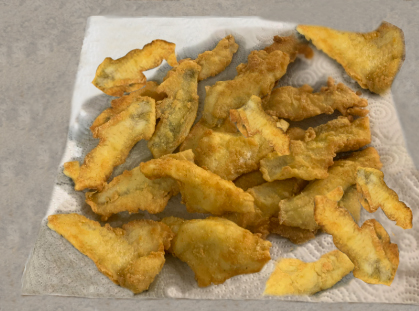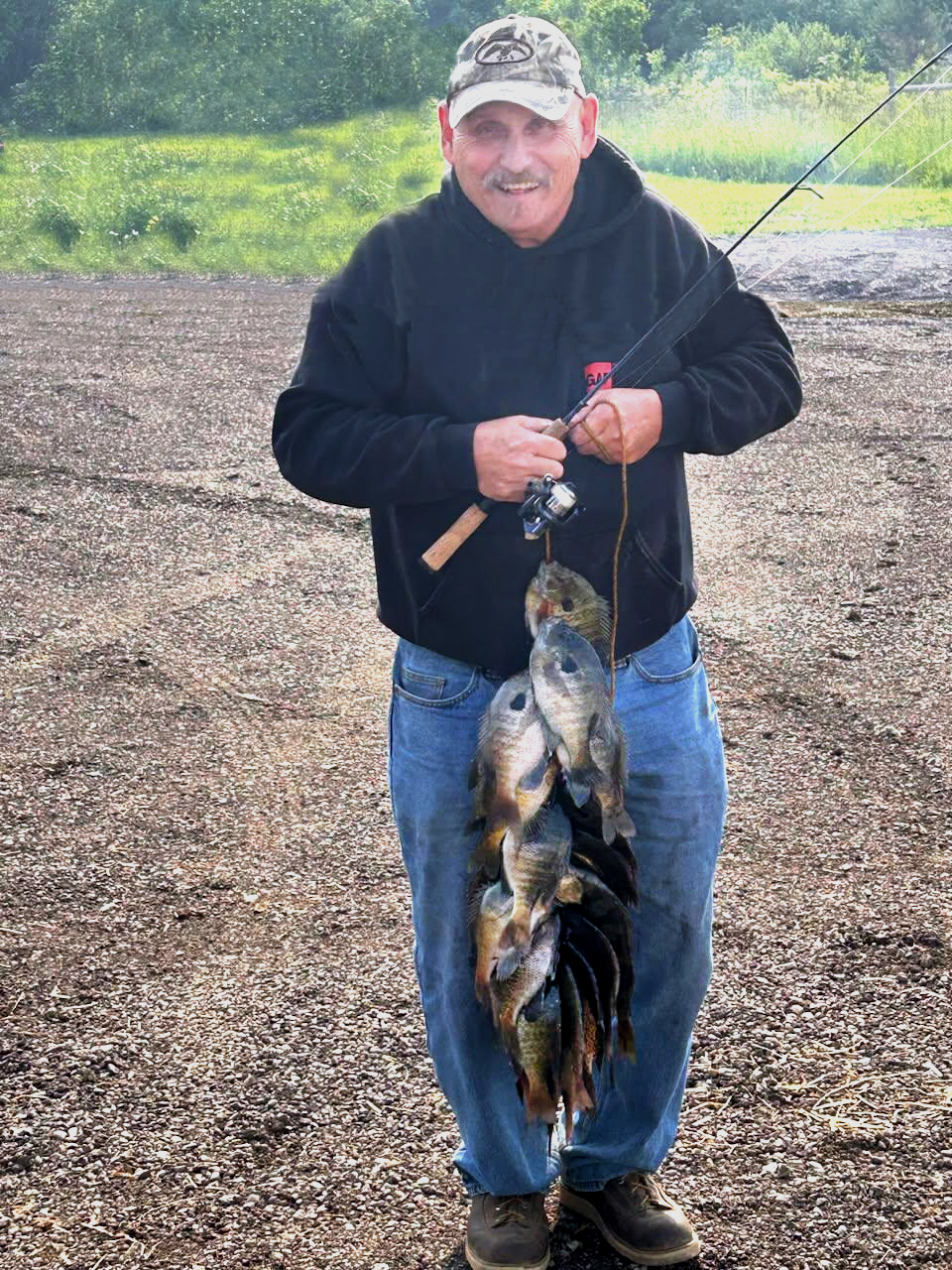Do parents still start their kids out fishing with the trusty old Zebco spin-casting rod and reel? That combo, in my childhood, hooked plenty of panfish - and hooked me on fishing too.
Panfish are, by far, the most popular fish in Michigan. For every salmon charter trolling the Great Lakes, there are dozens of people lining the shores of inland lakes, chasing the tastiest fish Michigan has to offer. I'll never turn down a bluegill dinner, and if perch fillets are on the menu, you've got a new best friend.
As kids, we didn't care how big the fish were. Every one of them was a trophy, and every one was a thrill to catch. As adults, we tend to be a little pickier - we're after "keepers." We know that they're called "panfish" for a reason. Keepers are perfect for the pan!

This guide is built to do just that - help you find those 'keepers'. We'll break down the simple gear you need and the specific summer patterns for Michigan's big three: Bluegill, Crappie, and Perch.
Essential Panfish Gear - Keep It Simple
The beauty of panfishing lies in its simplicity. You don't need specialized gear. Whatever spinning rod and reel you've got will work just fine for panfish. If you're using line heavier than 15-pound test, consider switching to something lighter. Six to eight-pound monofilament is ideal - it's strong enough to handle any panfish you'll encounter, but light enough that you won't spook wary fish in clear water.
Your tackle box doesn't need to be complicated either. Stock up on small jigs weighing 1/32 to 1/8 ounces, small hooks in sizes 6 through 10, split shot, and a few bobbers. Throw in some live bait containers and you're ready to hit the water. The most productive colors for jigs are chartreuse, white, pink, and black - though panfish can be surprisingly picky about color from day to day.

Bluegill - The Bread and Butter
Bluegill are Michigan's bread and butter panfish, and they're found in virtually every inland lake across the state. These aggressive little fighters are most active from late May through July, when they move into shallow water to build their spawning beds.
During spawning season, look for bluegill in 2 to 6 feet of water near sandy or gravel bottoms. They prefer areas with some cover nearby - fallen trees, weed edges, or docks. The males will be guarding their nests aggressively, making them easy targets for well-presented baits.
Your best bet for big bluegill is a small hook with a piece of nightcrawler or red worm. Cast beyond the visible beds and slowly work your bait back through the spawning area, or use a small bobber to suspend your worm just off the bottom. Don't be surprised if you feel that telltale tap-tap-tap of a bluegill investigating your bait before committing.
After the 'gills leave their beds, they'll move to deeper territory - typically 8 to 15 feet of water around points, tree stumps, and weed lines. This is when a slip bobber setup really shines. Set your bait about a foot off the bottom and be patient. Post-spawn bluegill can be finicky, but the fish you catch will be the fattest of the year.
Live bait is hard to beat for bluegill, but don't overlook small plastics. A 1-inch grub on a 1/16-ounce jighead can be deadly, especially in clear water like Lake Orion in Oakland County, where bluegill might be spooked by the splash of a bobber.
Ken Dalton, of Attica Michigan, successfully uses ice fishing teardrops and a slip bobber for bluegill in the summer months. He covers the hook with leftover ice fishing waxworms and sends us pictures of his limits as proof of his next few meals. He says that he throws a lot of little ones back, but when there are keepers in the area, they seem to dominate the bait.

Crappie - The Slab Specialists
Crappie fishing in Michigan requires a bit more finesse than bluegill fishing, but the payoff is worth it. These fish travel in schools, so when you find one, there are usually more nearby. Michigan's inland lakes hold both black and white crappie, though blacks tend to dominate in most waters.
Spring is prime time for crappie, particularly during their spawning period in April and May when water temperatures hit the 60-degree mark. Look for them in shallow bays and coves with soft bottoms and plenty of cover. Fallen trees, brush piles, and emergent vegetation are crappie magnets during this period.
The key to consistent crappie fishing is understanding their relationship with structure. These fish rarely roam open water like bluegill might. Instead, they position themselves around specific pieces of cover and ambush passing prey. If you're fishing out of a boat, a good fish finder can be invaluable for crappie fishing, helping you locate both the structure and the fish.
A simple bobber rig with a small minnow is hard to beat for crappie. Set your bobber so the minnow is suspended near cover - fallen trees, brush piles, or dock pilings. For boat anglers, slowly jigging a small minnow or jig around structure can be very effective. Crappie have soft mouths, so keep your drag loose and avoid aggressive hook sets. A gentle lift of the rod is usually enough to drive the hook home.
During the summer, crappie move to deeper areas of the lake - typically 12 to 20 feet of water around submerged stumps, points, and drop-offs. Look for them near fallen trees, brush piles, or other cover in these deeper areas.
One trick many Michigan crappie anglers swear by is fishing during low-light periods. Early morning and late evening often produce the best action, and don't overlook night fishing under lights. A submersible light near a dock or pier can attract baitfish, which in turn draws in hungry crappie. Higgins Lake is a nice clear lake where this tactic works really well.

Yellow Perch - The Table Fare Champions
Bluegill might be Michigan's most popular panfish and crappie are considered the most challenging, but yellow perch are hands-down the best eating. These striped beauties are found throughout Michigan's inland lakes and provide some of the most consistent action you'll find.
Perch are school fish, often traveling in large groups based on size. When you find a school of keeper-size perch, you can often fill your limit quickly. When you catch a nice one, get your bait back into the water fast! Perch prefer areas with sand, gravel, or rocky bottoms and are commonly found around points, and weed edges in 8 to 25 feet of water.
The perch spreader rig is a Michigan classic - two small hooks on short leaders with a sinker at the bottom. Use small minnows, pieces of nightcrawler, or even small jigs on the hooks, covering the point and barb. Drop it to the bottom and slowly lift and lower the rig to attract attention. A perch has excellent eyesight and will often inspect your bait carefully before biting.
Live minnows are the gold standard for perch fishing, but they're not always necessary. Small jigs in white, chartreuse, or orange can be extremely effective, especially when tipped with a piece of worm or a small plastic tail. The key is keeping your bait near the bottom where perch do most of their feeding.
During late summer, perch often school up in deeper water preparing for winter, making them easier to locate and catch in numbers.

Don't Forget the Rock Bass
While not technically in the "big three," rock bass deserve an honorable mention in any Michigan panfish discussion. These bronze-colored fighters are found in most inland lakes and provide steady action when other species are finicky. They're particularly abundant around rocky areas, fallen trees, and docks.
Rock bass aren't as table-worthy as the other panfish, but they're scrappy fighters that will readily take small jigs, live bait, and even tiny spinnerbaits. They're excellent fish for kids to cut their teeth on, as they're aggressive and not particularly line-shy. I'll be honest - I love it when I hook a rock bass. They're fun to catch! My favorite lake to fish rock bass is currently Hubbard Lake in Alcona County. I'm not afraid of you stealing my hotspot because it's a big lake!

Sunfish Species
Michigan waters also hold green sunfish, hybrid sunfish, longear sunfish, pumpkinseed, and redear sunfish. All count toward your 25-fish panfish limit and can be caught using the same techniques as bluegill. Pumpkinseeds are easily identified by the red spot on their gill flap, while green sunfish have a more elongated body than typical bluegill.
Timing and Location Tips
Successful panfishing is all about timing and location. Early morning and late evening are typically the most productive times, though panfish can be caught throughout the day under the right conditions. Overcast skies often trigger feeding activity, making cloudy days excellent for panfishing.
When scouting new water, look for shallow bays and coves during spring, then focus on deeper structure as the season progresses. Jutting shorelines, submerged logs, and weed lines consistently hold panfish throughout the summer. Don't overlook man-made structure either - old Christmas trees, brush piles, and even sunken tires can be panfish gold mines.
Pay attention to water temperature and clarity. Panfish are cold-blooded, so their activity levels are directly tied to water temperature. In clear water, downsize your tackle and be stealthier in your approach. In stained water, you can often get away with heavier tackle and more aggressive presentations.
Panfishing in Michigan's inland lakes offers something for everyone - from the young angler catching their first fish to the seasoned veteran pursuing a personal best bluegill. The techniques are simple, the gear is affordable, and the fish are plentiful.
Michigan Panfish Limits
Michigan allows 25 panfish per day (bluegill, crappie, rock bass, pumpkinseed, etc.) and 25 perch per day as separate limits. Possession limit is 75 total for each category if processed/frozen. You could legally keep 25 panfish AND 25 perch in the same day, and accumulate up to 75 of each in your freezer. Check the Michigan DNR Fishing Guide for more info.
Remember to double-check current regulations for bag limits and size restrictions.
Whether you're introducing a youngster to the sport or just looking for a relaxing day on the water with some excellent table fare as a bonus, Michigan's inland lakes won't let you down. Grab that Zebco combo, dig up some worms, and get ready to have some relaxing fun - and maybe fill a stringer while you're at it.